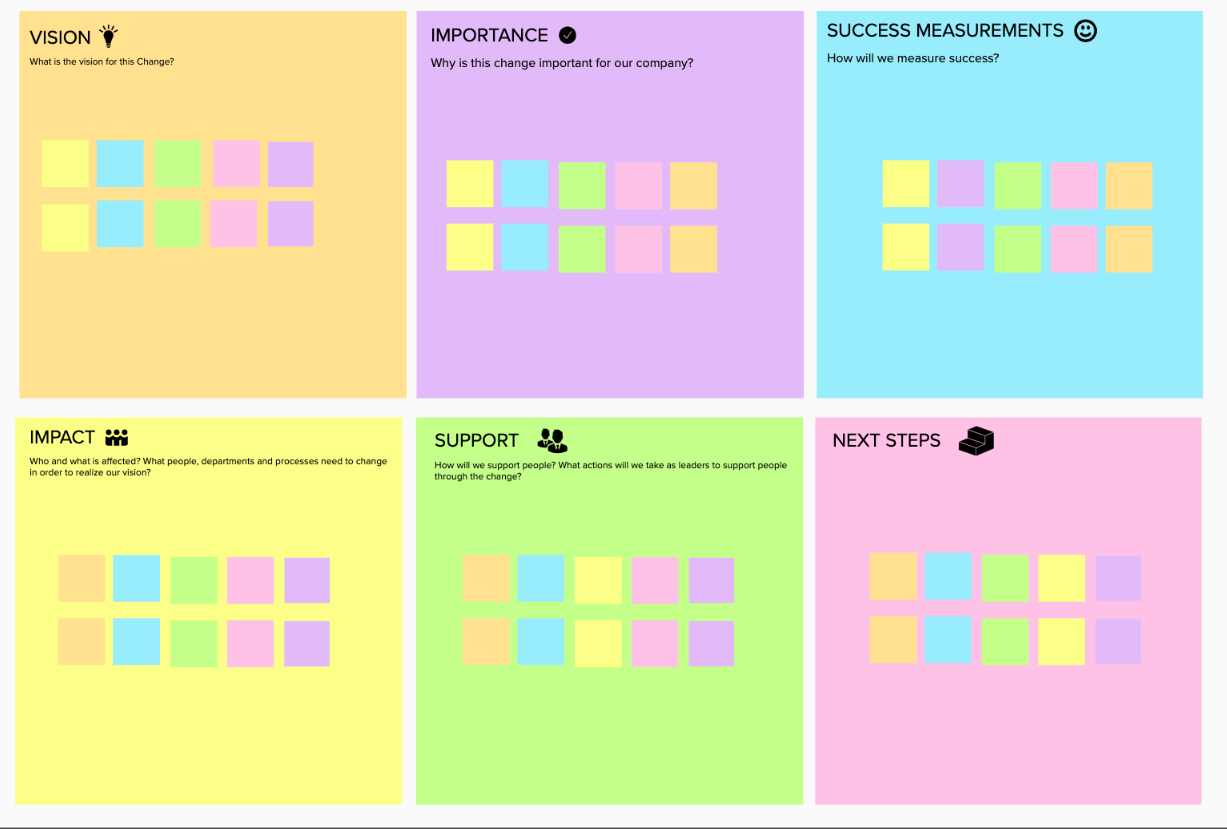Understanding the agile mindset and where you’re headed will help you avoid common pitfalls.
With the knowledge I’ve gained by implementing agile marketing in several teams over the last decade, I’ve encountered some common obstacles that make it challenging to implement. You can avoid those pitfalls by being able to catch them early.
Leaders that aren’t aligned
Agile marketing is more than just a process, so aligning leaders on the mindset shift that needs to happen will be critical to your success.
You’ll want to understand the scope of your agile marketing transformation and everyone impacted by it. This may involve leaders within marketing and leaders from other teams, such as sales, who request work from marketing.
Hold a collaborative “visioning” working session once you’ve identified which leaders will be impacted.

During this session, discuss:
- Vision: What’s the vision for this change?
- Importance: Why is this change important for our company?
- Success measurement: How will we measure success?
- Impact: Who and what is affected? What people, departments and processes need to change to realize our vision?
- Support: How will we support people? What actions will we take as leaders to support people through this change?
- Next steps: Note any further action items that leaders need to take.
By going through this activity, all leaders will be able to speak about agile marketing in the same way. If you have leaders opposed to the change, try and uncover what’s behind their reservations. If the majority are in favor and you have a few reluctant leaders, ask that they support the effort, even if they can’t quite see the benefits yet.
Trying to bite off too much at once
Let’s face it, after the last couple of years of uncertainty, most marketers are dealing with change fatigue. If you try to rip off the Band-Aid all at once, you may be faced with a huge revolt as change is scary.
Instead, take on an agile approach to becoming agile. Begin with some basic education, so everyone knows what it means (there are many preconceived notions and false info out there). Then, determine the pain points in the marketing organization and how agile can help people, not just add more change.
I always recommend starting with a pilot team to test and learn how agile marketing best works, given your culture, people and business needs. Pilot teams can feel messy, but a lot of learning is uncovered from the process of doing, not just planning.
Focusing on process only
I cringe when I hear people say they’re doing agile marketing because they purchased a workflow tool that says it’s agile. While tools are important, the culture and way people work need to change — a tool merely supports that change.
In the early days of agile in software development, everything was done on sticky notes on the wall because tools often prohibited meaningful collaboration and conversation. Well, we’re now living in a global marketing and online world, so tools are necessary. However, don’t center how you approach agile marketing around a tool change.
Culture change must be the primary driver for prolonged and lasting success.
Taking a team only approach
I often see companies taking a “team only approach.” This means that they expect the marketers on the team to learn agile marketing and change, but no one else around them does. Let me tell you — this is an approach that won’t get you very far.
Since agile marketing is about a new and different way of working, everyone is impacted. Managers may need to work differently because they no longer assign team members to work but coach them in career growth and skills development. Business stakeholders need to work differently because teams now prioritize work through a backlog, so how they request work has to change. Even departments like Human Resources may be impacted, as how reviews happen, and how people are compensated, may go from an individualistic approach to a team-based one.
Using agile words, but not really changing
And last, but certainly not least, are those companies that use all of the right agile words but want to keep working in the exact same way as before. These are the same people that think they can lose 10 pounds by eating an entire box of Girl Scout cookies and sitting on the couch (believe me, I’ve tried this approach — it doesn’t work)!
So while knowing the agile lingo is great, it’s really understanding the agile mindset and where you’re headed, not just where you’re at today, that’s crucial for your success with agile marketing.
The post 5 big obstacles to overcome to succeed in agile marketing appeared first on MarTech.
(20)






